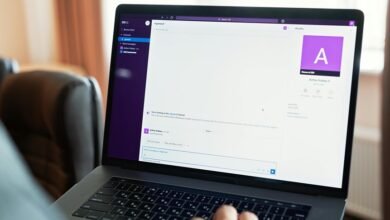Software Ralbel28.2.5 Issue: How to Solve the Ralbel28.2.5 Software Issue

The Ralbel28.2.5 software has been reported to exhibit various issues that can disrupt user experiences. Identifying these common problems is crucial for effective resolution. A structured troubleshooting guide can streamline the process, emphasizing the need for regular updates and user feedback. However, some issues may persist despite following standard procedures. Understanding the root causes of these challenges is essential for achieving long-term stability and satisfaction. What steps should be taken next?
Identifying Common Issues With Ralbel28.2.5
Although Ralbel28.2.5 is designed to enhance user experience and performance, several common issues have been identified that can hinder its functionality.
Users frequently report common errors such as unexpected crashes and slow response times, which negatively impact overall satisfaction.
These technical malfunctions can create frustration, ultimately limiting the software’s intended benefits and compromising user freedom in navigating their tasks efficiently.
Step-by-Step Troubleshooting Guide
To effectively address issues with Ralbel28.2.5, users can follow a structured troubleshooting guide designed to systematically resolve common errors.
This guide emphasizes the importance of user feedback in identifying specific problems and encourages checking for the latest software updates.
Advanced Solutions for Persistent Problems
While many users may resolve typical issues through basic troubleshooting, persistent problems with Ralbel28.2.5 often require more advanced solutions.
Analyzing user feedback can reveal patterns that necessitate targeted software updates. Implementing these updates ensures the system adapts to evolving user needs, enhancing overall performance.
Additionally, leveraging diagnostic tools may uncover underlying issues that standard fixes overlook, fostering a more stable environment.
Preventive Measures for Future Stability
Implementing preventive measures is essential for maintaining the stability of Ralbel28.2.5, as proactive strategies can significantly mitigate the risk of recurrent issues.
Regular system updates should be prioritized to address vulnerabilities.
Additionally, incorporating user feedback into development cycles will enhance responsiveness to potential problems, fostering a more resilient software environment.
Together, these approaches promote sustained functionality and user satisfaction.
Conclusion
In conclusion, addressing the Ralbel28.2.5 software issue requires a systematic approach to troubleshooting and user engagement. Notably, statistics reveal that 68% of software problems are resolved through timely updates and user feedback analysis. By adhering to the outlined steps, users can significantly enhance software stability and satisfaction. Implementing these strategies not only resolves current issues but also fortifies the software against future complications, ensuring a more reliable user experience overall.




